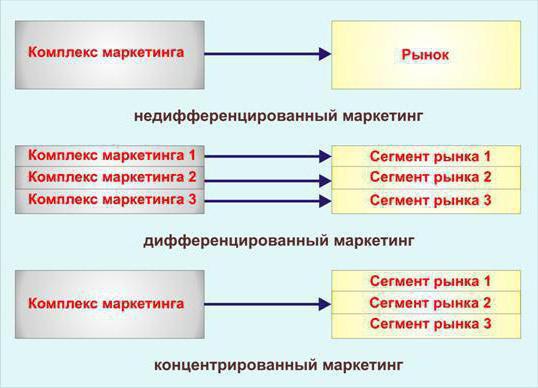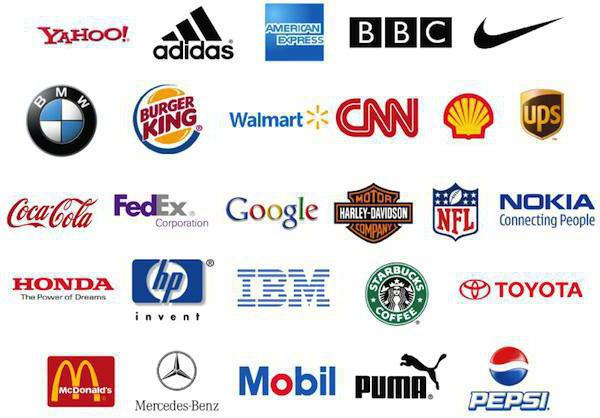The company gains popularity due to competent marketing and following the plan of building its business. A significant role in this is played by the concept of segmentation, i.e., the choice of a particular market with a specific buyer and assortment of goods. But how to choose the right direction, by what principles and factors to determine it, and which coverage option to use?
Marketing Segmentation
Before moving on to the types of strategies and dwelling on a specific form, you should analyze the segmentation methods that every company should know. Although there is no single division of the market into groups, and, as a rule, the company experimentes and tries to interact with different categories of customers for some time, changing parameters.
There are several key variables used in segmenting the consumer market:
- Geographical principle, toWhich requires breaking down the market into a district, city, region, country, and state. Everything will depend on the direction of development and start-up capital.
- Demographic principle implies the division of the market by gender, income level, family composition, age, etc. This is one of the most popular parameters, allowing you to divide into groups of all consumers. Also, this principle is easiest to measure and calculate, and it is closely related to everyone else.
- Psychographic parameter - considers buyers in terms of belonging to the social class and lifestyle.
- Behavioral Features are one of the most important characteristics, because it is they that help to divide buyers into their attitude to the product, their knowledge about it and reaction.
Target Market Definition
The company should definitely know its customer, for this segmentation is carried out, where a portrait is drawn according to certain parameters. After this stage is completed, the choice of undifferentiated marketing strategy, differential or concentrated.
The bottom line is that the firm needs to decide what proportion needs to be covered by choosing from three options:
- Undifferentiated marketing - the choice of the company when it determines that it does not need to differentiate its activities, and will offer its goods to everyone.
- Differentiated marketing - the company chooses this option when it decides to speak on several segments and understands that it will not be able to satisfy all consumers with one product, and more often it happens that the buyer himself does not want to acquire the goods in his status, like everyone else. A very striking example are cars with different price categories. Moreover, this option of market coverage helps people to remember, which means that they will come to this company again for the second and next product.
- If the company does not fit differentiated and undifferentiated mass marketing, then the third option remains - concentrated. Such a strategy, for example, is suitable for a limited capital company, which is developing in one direction and thereby securing a strong position in this market. Another option is when the company directs all development to the creation of goods for rich people, such as, for example, Aston Martin.
The concept of undifferentiated marketing
This article will examine in more detail the first option of market coverage, when the company focuses not on the differences between customers from each other, but is looking for something in common between them.
There are several definitions of this concept:
- This is a strategy where differences are ignored and a massive distribution system and massive advertising campaigns are used.
- This is the direction when they come to the market with one offer.
- This is the development and creation of a product that will meet the needs of most buyers.
Benefits
Undifferentiated marketing with customer focus implies that the company with this option will receive much more profit and satisfy more customers than will segment its potential customers.
In addition, this area has its advantages:
- The assortment of goods is very small, so production costs are not high.
- From the first paragraph it follows that if a little is spent on production, then the goods will be cheap.
- The ability to cover wide market boundaries.
- The product is intended for the masses, which means that the costs of marketing, advertising and research will be low.
- Due to the low price of the goods, there is more freedom of action than competitors who segment their activities.
disadvantages
Each strategy in any business has its pros and cons so that the company can understand what you need to be prepared for. Undifferentiated marketing has the following disadvantages:
- The cost of creating a product is small, as a result of which a low price also develops. But if there is an increase in the cost of raw materials, electricity and wages increase, this can lead to a reduction in the price gap with competitors.
- It is not so easy to create a unique product that can satisfy every customer and keep the bar of a unique product.
- Fierce competition in this segment, because many companies want to cover a large segment of the market.
Influencing factors
Focusing on market coverage strategies, such as undifferentiated marketing, it is imperative to consider factors that affect product promotion:
- The company's resource should be large enough, as this is a consumer goods, which means that production will be in large quantities.

- Selection of different competitor strategies. Here, a company that has chosen undifferentiated marketing cannot compete with other manufacturers that produce the same product, but have opted for segmentation.
- The product must be homogeneous and suitable for every consumer, for example, wood or other building material.
- This option is best suited when only the first stage of the product life cycle begins and the company produces only one product.
Strategy Terms
Whatever strategy is chosen by the company, there will always be both positive and negative sides. Be sure to prioritize, understand that this area will be relevant (undifferentiated marketing), if:
- the product on the market is unique, not like the others and will be in demand;
- if the product is new and will be of interest to the consumer;
- if competitors use the same strategy.
Examples of undifferentiated marketing
Large companies most often try to select and divide their customers into segments in order to satisfy their needs to the maximum. But there are also companies that are looking for common features. The most striking example is Coca-Cola, which at the early stage of development created one drink, bottled it in the same size and sold it to all people without exception.
An interesting example is the Japanese company Fukubukoro, which produces sealed boxes with various goods. Consumers, although they don’t know what they are buying, but this does not make their desire less. The essence of such a “magic chest” is that if the buyer purchases all the goods separately, it will cost him much more.
This idea was picked up today by cosmetic companies and its representatives, such as Glamor, which sends beauty boxes to its customers every month, investing in various care products and decorative cosmetics.
Another example when using undifferentiated marketing is the situation with the development of microbreweries in the USA, which in the main market could not compete with such giants as Miller or Budweiser. These firms spent a lot of money on advertising, which allowed them to become popular. Then small breweries began to “seize” certain territories, areas of the city, and this allowed them to develop successfully.
findings
Before a company decides which market coverage option to choose and whether to focus on undifferentiated marketing, it should be understood that the product must be heterogeneous and original. That such an option is suitable if there is a new release of goods that every consumer will appreciate.
This strategy is good for its profitability, not only in marketing. This reduces transport costs, reduces the advertising budget, requires less various equipment, etc. However, powerful competition may appear, which not every company can handle.